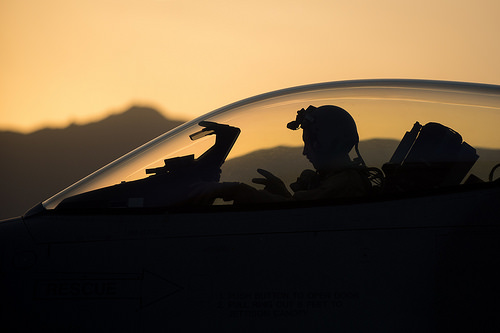ISIS, the Taliban, and the 2001 AUMF
The recent confirmation of Mullah Omar’s death has led to a great deal of discussion on a variety of regional issues: what does the Taliban’s loss of Omar mean for the future of the organization? For the Taliban’s peace talks with the Afghan government? For that government itself? And what does it mean for ISIS’s presence in Afghanistan?

Published by The Lawfare Institute
in Cooperation With

The recent confirmation of Mullah Omar’s death has led to a great deal of discussion on a variety of regional issues: what does the Taliban’s loss of Omar mean for the future of the organization? For the Taliban’s peace talks with the Afghan government? For that government itself? And what does it mean for ISIS’s presence in Afghanistan?
Less discussed has been the possible effect of Omar’s death on that evergreen topic, the 2001 AUMF.
Alongside al Qaeda, the Taliban is the second organization agreed to have been initially included under the 2001 AUMF. The Obama administration has argued---albeit contentiously---that the AUMF authorizes the use of force against ISIS as a successor of al Qaeda. The question I want to pose here is whether ISIS’s apparently burgeoning hostility toward the Taliban should have any effect on how we think of the administration’s use of the 2001 AUMF to authorize force against ISIS, given that this conflict renders ISIS emphatically not an associated force of the Taliban.
The Taliban clearly didn’t welcome ISIS’s entrance into Afghanistan, politely warning Abu Bakr al Baghdadi to stay out of their fight with the Afghan government. Since then, the two groups have been involved in sorties as they battled over Afghanistan’s eastern Nangarhar Province. Yet Mullah Omar’s death has put the Taliban’s future very much in question, with internal divisions and the loss of Omar’s legitimating leadership causing serious difficulties for the group---and a variety of news sources have suggested that ISIS may seek to seize the advantage against the weakened and splintered Taliban, perhaps pitting the two groups in direct conflict over control of Afghanistan.
This news presents an occasion to pause and reconsider. Debate over the 2001 AUMF as authorizing force against ISIS has largely been confined to ISIS’s (highly disputed) connection to al Qaeda, but the Taliban may become increasingly relevant to the discussion.
To be clear, the Obama administration has never argued that ISIS is an associated force of the Taliban. Instead, so far as the administration is concerned, the 2001 AUMF’s authorization of force against ISIS flows only through ISIS’s link to al Qaeda as a kind of successor force; the role of the Taliban is immaterial to this argument. What this means is that ISIS hostilities against the Taliban have no effect on the purely legal arguments for the applicability of the 2001 AUMF to ISIS. Furthermore, because the administration position has never been that ISIS and the Taliban are themselves associated, indications that the two groups may soon be involved in all-out war don’t affirmatively cut against any existing government reasoning as to the the groups’ relationship under the AUMF.
What Taliban-ISIS hostilities do indicate with regard to the AUMF is something more inchoate, but also more obvious. To put it bluntly: this just doesn’t look good. The primary organization with which the United States is currently engaged in conflict under the 2001 AUMF (ISIS) now has an at-best attenuated relationship with one of two organizations covered by the AUMF (al Qaeda), and may soon be engaged in outright warfare with the other significant, AUMF-covered organization (the Taliban). If we needed one more sign of the 2001 AUMF’s strained application to the war that the United States is now fighting, here it is. Legally, the looming ISIS-Taliban conflict may have nothing new to add. But in terms of the political-legal climate that surrounds the 2001 AUMF, it’s yet another, depressingly familiar reminder.
So just what does all this mean? Probably nothing. As Bobby wrote last Friday in his post on possible AUMF justifications for U.S. airstrikes against al Shabaab, it’s just not clear if anyone cares about the statute’s further stretching. And the war goes on.




.jpg?sfvrsn=77450a02_11)
